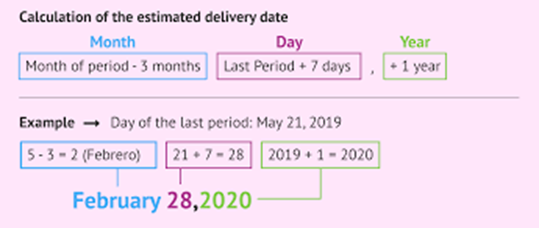A nurse is caring for an adolescent client who is gravida 1 and para 0. The client was admitted to the hospital at 38 weeks of gestation with a diagnosis of preeclampsia. Which of the following findings should the nurse identify as inconsistent with preeclampsia?
Blood pressure 160/115
Anasarca
Proteinuria 3+
Deep tendon reflexes
The Correct Answer is D
a. This is a sign of severe preeclampsia.
b. This is a sign of severe preeclampsia.
c. This is a sign of severe preeclampsia.
d. Deep tendon reflexes are not affected by preeclampsia, which is a hypertensive disorder of pregnancy characterized by high blood pressure, proteinuria, and edema.
Nursing Test Bank
Naxlex Comprehensive Predictor Exams
Related Questions
Correct Answer is B
Explanation
a. This does not follow the Nagele's rule.
b. Nagele's rule is a method to estimate the expected delivery date by adding 7 days and subtracting 3 months from the first day of the last normal menstrual period. In this case, adding 7 days to March 13 gives March 20, and subtracting 3 months gives December 20. Then, adding one year gives December 20, 2022.
c. This does not follow the Nagele's rule.
d. This does not follow the Nagele's rule.

Correct Answer is C
Explanation
a. This may be necessary once the woman's condition stabilizes, but it is not the initial treatment.
b. This is not typically indicated for hyperemesis gravidarum.
c. This is the initial treatment for hyperemesis gravidarum to prevent dehydration and correct electrolyte imbalances.
d. This may be part of the treatment plan, but it is not the initial treatment.
Whether you are a student looking to ace your exams or a practicing nurse seeking to enhance your expertise , our nursing education contents will empower you with the confidence and competence to make a difference in the lives of patients and become a respected leader in the healthcare field.
Visit Naxlex, invest in your future and unlock endless possibilities with our unparalleled nursing education contents today
Report Wrong Answer on the Current Question
Do you disagree with the answer? If yes, what is your expected answer? Explain.
Kindly be descriptive with the issue you are facing.
